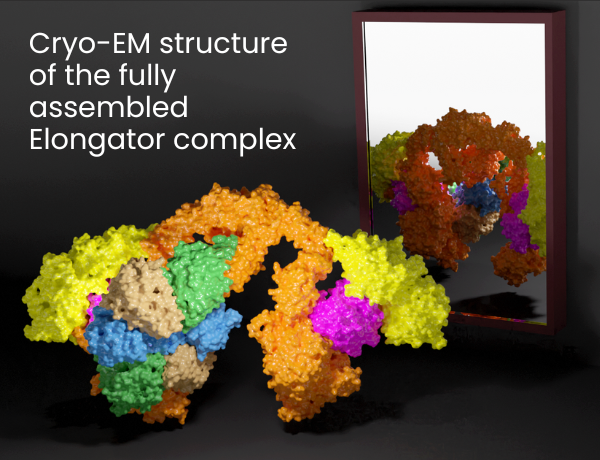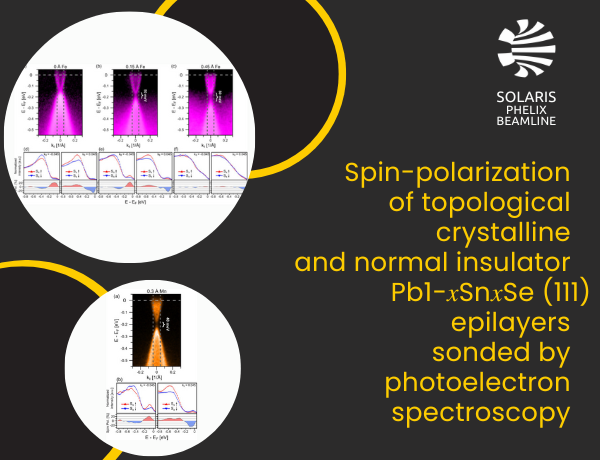
 Web Content Display
Web Content Display
SOLARIS centre
 Web Content Display
Web Content Display
 Web Content Display
Web Content Display
Research
High-temperature co-electrolysis of CO2/H2O and direct methanation over Co-impregnated SOEC. Bimetallic synergy between Co and Ni
02.02.2023
To study the synergy between the transition metals for enhancing the electrochemical and chemical activity, a series of SOECs were modified with a small amount of Co ions, namely 1.8, 3.6, and 5.4 wt% in the reduced state.
Read More o High-temperature co-electrolysis of CO2/H2O and direct methanation over Co-impregnated SOEC. Bimetallic synergy between Co and Ni
The complete structure of the Elongator complex
17.01.2023
Wobble uridine carboxymethylation at the tRNAs anticodon is essential for correct protein synthesis. In archaea and bacteria the modification reaction is catalyzed by the Elp3 enzyme, while in eukaryotes the enzyme is a part of the large multi-subunit Elongator complex. The latest work of scientists from the Malopolska Centre of Biotechnology (MCB/UJ) describes the first high resolution cryo-electron microscopy (cryo-EM) structure of Elongator, which sheds light on the role of the Elp456 subcomplex. The study was published this week in Nucleic Acids Research as a Breakthrough Article.
Read More o The complete structure of the Elongator complex
Challenges and opportunities in the development of Na-ion batteries
11.01.2023
Users of the PIRX beamline have obtained groundbreaking results showing this material's electron structure plays a fundamental role in the alkaline electrochemical intercalation process, determining the shape of the discharge curve (OCV) and impacts important performance parameters of Li-ion and Na-ion cells, such as energy density and power density. The discovery is universal in nature and has great significance for the design and search for new electrode materials for Li-ion and Na-ion cells.
Read More o Challenges and opportunities in the development of Na-ion batteries
Spin-polarization of topological crystalline and trivial insulator films
02.01.2023
Researchers from MagTop IF PAN in collaboration with scientists from PHELIX beamline at the SOLARIS Centre investigated electronic and spin structure in films of topological crystalline insulator across topological - normal insulator transition manifesting itself as band gap opening in the band structure. Using spin-resolved photoelectron spectroscopy they revealed helical spin-polarization presence not only in the topologically non-trivial phase but also in the trivial insulator state. This potentially expands the range of materials suitable for spintronic applications and provides new knowledge about the spin and electronic structure of topological materials.
Read More o Spin-polarization of topological crystalline and trivial insulator films
The valance state of vanadium- key factor in the flexibility of potassium vanadates structure as cathode materials in li-ion batteries
03.01.2023
Potassium hexavanadate (K2V6O16·nH2O) nanobelts have been synthesized by the LPE-IonEx method, which is dedicated to synthesis of transition metal oxide bronzes with controlled morphology and structure. The electrochemical performance of K2V6O16·nH2O as a cathode material for lithium-ion batteries has been evaluated. The KVO nanobelts demonstrated a high discharge capacity of 260 mAh g-1, and long-term cyclic stability up to 100 cycles at 1 A g-1. The effect of the vanadium valence state and unusual construction of the nanobelts, composed of crystalline and amorphous domains arranged alternately were also discussed in this work. The ex-situ measurements of discharged electrode materials by XRD, MP-AES, XAS and XPS show that during the subsequent charge/discharge cycle the potassium in the K2V6O16·nH2O structure are replacing by lithium. The structural stability of the potassium hexavandate during cycling depends on the initial vanadium valence state on the sample surface and the presence of the “fringe free” domains in the K2V6O16·nH2O nanobelts.
Read More o The valance state of vanadium- key factor in the flexibility of potassium vanadates structure as cathode materials in li-ion batteries


